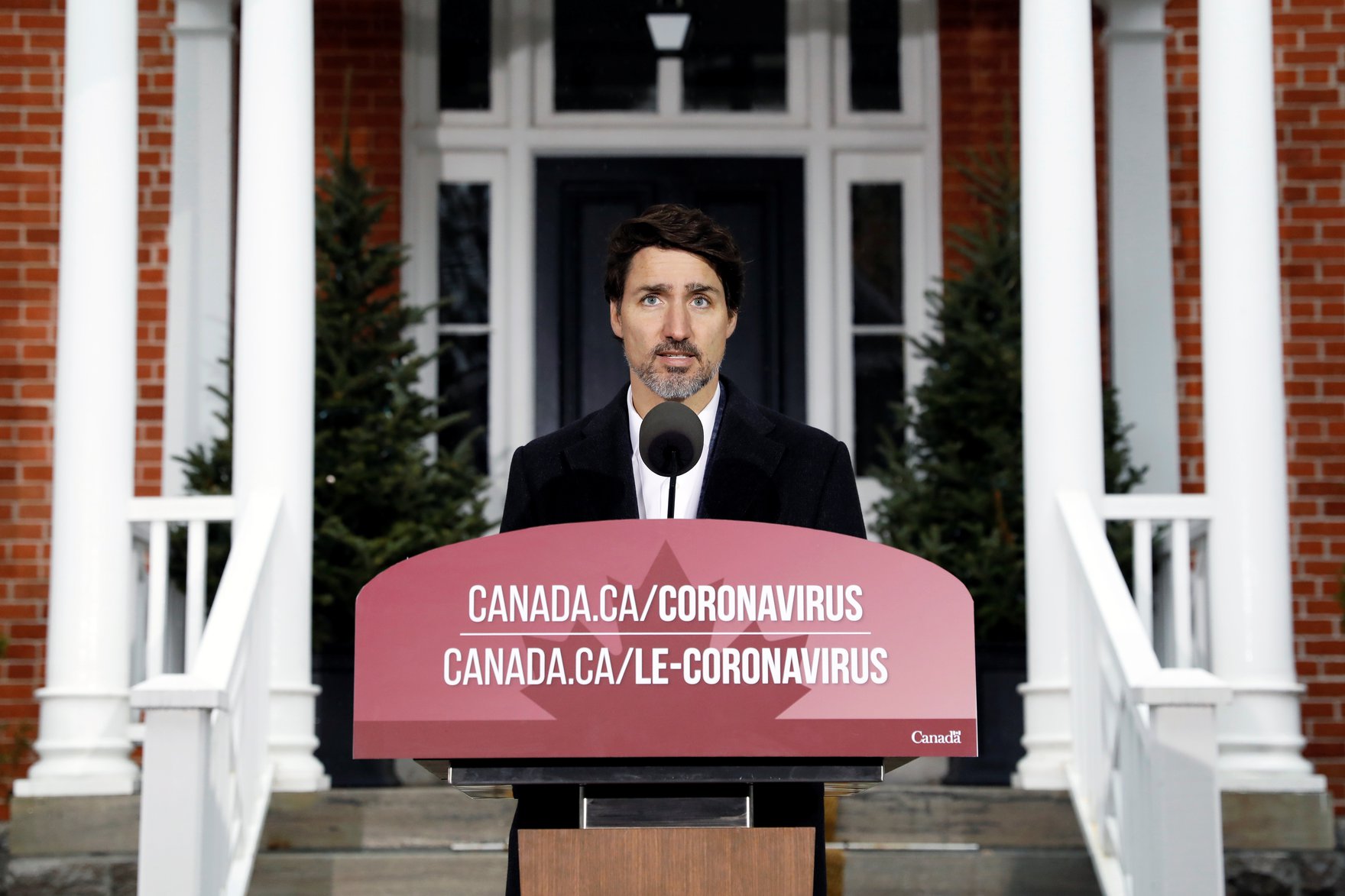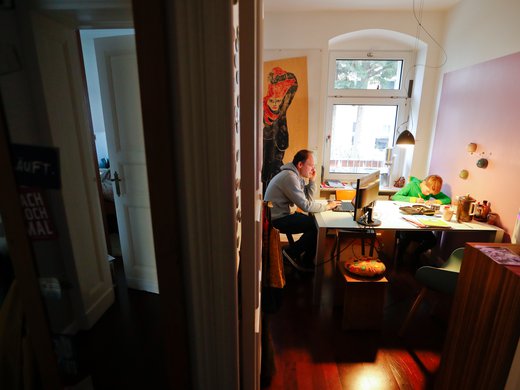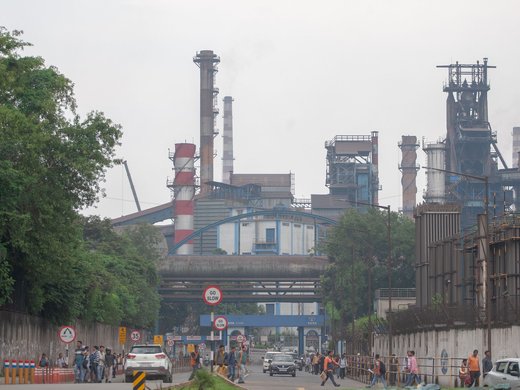On March 23, 2020, in response to the spread of the COVID-19 virus, Canada announced a lockdown. It was the right move, and hopefully not too late. Canada had the same window for action as Taiwan to arrest the spread of the virus and limit the outbreak’s impact on their economies and population. Canada had the initial advantage of being further removed from the site of first outbreak. This gave Canada more time, but also invited delaying action and adopting inadequate “partial solutions” as measures less likely to draw criticism for “overreaction.” Taiwan acted expeditiously and aggressively — for example, assessing air travellers’ health from the moment the World Health Organization announced the outbreak. By the time Canada acted, the window to pre-empt a full-blown crisis had shrunk to perhaps a few weeks at the most. And the window is now steadily closing, as the caseload gets heavier day by day across the country.
Even more worryingly, the epicentre for the pandemic has moved to our very borders. To the latter point, the United States took over the lead in the number of cases on March 26, with New York City cued up as the next major crisis zone. And Florida, host to hundreds of thousands of Canadian snowbirds who are due to come home as spring arrives, is flashing red.
No Trade-off between Stopping the Spread and Saving the Economy
The prognosis for the US economy is now that it will effectively go into free fall for some weeks or months: estimates for economic activity in the United States in the spring quarter now range as low as –24 percent (quarter-over-quarter at annual rates). Optimistic forecasts that anticipate a V-shaped recovery build in a snapback in economic activity in the summer quarter. This would limit the economic damage on an annual basis in the United States to perhaps at most the –4 percent range. However, the reality of half measures and inconsistent responses across states will likely delay the all-clear and result in a flatter U-shaped recovery. Notably, even in China, where draconian controls were imposed to arrest community spread and measures are now being taken to restore activity, the revival of activity has been slow: recent readings on such measures as traffic congestion are still consistently below levels recorded a year ago and household consumption remains subdued.
Europe, which saw comparably steep declines in business activity in March as did the United States, faces an equally bleak short-term economic outlook; and Japan, which to date has been largely spared, took urgent steps on March 25 to respond to what Prime Minister Shinzo Abe described as a “national crisis,” following a surge of cases in Tokyo.
Moreover, the pandemic is only just starting to move through the Global South, which is following a similar trajectory but is simply not in a position to practise social distancing, work from home, or police what are often “imaginary borders.” Moreover, the Global South lacks the fiscal resources of the industrialized world to cushion the shock, and faces capital flight and a credit crunch as the US dollar rises (as it always does in a global crisis).
Kristalina Georgieva, managing director of the International Monetary Fund, acknowledges the likelihood of a recession at least as bad as during the global financial crisis or worse. The Economist Intelligence Unit has pegged 2020 global growth at –2.2 percent.
Canada, as a small open trading economy, heavily dependent upon the United States, cannot avoid this coming economic turbulence — all euphemisms aside, a collapse. As the proverbial saying goes, when the United States catches a cold, Canada gets pneumonia. And with a worldwide crisis brewing, trade diversification does not help.
There is no trade-off for Canada. Shutdown or no shutdown, the economic hit is coming.
The challenge for Canada is to not let this crisis be the normal course. We need to avoid pneumonia (both literally and figuratively). This is, of course, for our own benefit not only in terms of health but also in terms of economic outcomes — there is some evidence from prior pandemics, such as the Spanish flu of 1918, that communities that “intervened earlier and more aggressively do not perform worse and, if anything, grow faster after the pandemic is over.” Tough health measures now will also position Canada to help our US neighbours in what might be an hour of dire need and in due course to step up support for developing countries as their need rises (as it almost surely will).
As regards stopping the spread, we have a good idea of what has worked: early action to prevent the entry of the virus (Taiwan), a rigorous lockdown (China), and intensive testing and tracing (Korea). However, once community transmission is part of the picture, the testing program needs to include a random testing of the population to identify clusters in order to allow comprehensive testing of the clusters that are discovered.
Accordingly, we have to plan for, and proactively organize, an orderly shutdown of non-essential production, retool for essential production, implement a quarantine, organize life support for the population and for our businesses (more about that later), and plan and execute a testing program to track down the virus.
As we mobilize to “flatten the curve,” the objective should be to really flatten it – as in, stamping it into the ground. Hong Kong has just had a rebound after letting down its guard; unsettling forecasts based on the Spanish flu trajectory point to a resurgence of the virus in the fall flu season and further into 2021. Canada has to mobilize machinery for containment premised on it being in place for a minimum of two years.
Public Policy Must Lead
This is not a time for markets to organize a response based on price signals or production incentives.
- First, health is quintessentially a public good precisely because of contagious diseases. In economics, contagion has a “public” characteristic in that it reflects the effect of one person’s actions on others in ways that are not compensated financially nor regulated by contracts. In economic jargon, this is a “negative externality” that the market by definition does not and cannot regulate.
- Second, allowing prices to provide the signals for production of the newly urgently required goods (for example, face masks and ventilators) only makes sense when this generates a long-term investment response to structural change in a society’s consumption pattern. In a health crisis, the elevation of prices for such conventional goods would be pure price gouging and profiteering, which would and should be universally censured.
The machinery of public administration is required to adequately address this kind of issue. We are not at war, but the organization of a response is the same: command and control mobilization. While individual businesses have retooled to provide emergency relief, an economy-wide effort to meet Canada’s potential demands will require public coordination and financial support.
The disruption in normal commerce while the pandemic is being brought under control means that there will be a pervasive cash-flow issue for businesses. This is a liquidity problem, not a solvency problem. Our businesses are not failures; when the economy restarts, they will be just fine – but banks will need to do their part to ensure businesses stay afloat, by providing the working capital to sustain business through the crisis period, with public sector backing (measures Canada has already set in motion) and repayment terms set for the indefinite period when the economy is secured.
Public support to keep employees on payroll is crucial. The importance of keeping people on payroll is well articulated by Pinelopi (Penny) Goldberg, former chief economist at the World Bank (in a recent interview with NPR): “Avoid layoffs at any price. Wherever possible, switch to part-time work or fewer hours. If companies do not have the cash to pay employees, don’t pay them, but keep them on the books. Keeping one’s job (even if only an illusion of a job) will provide much-needed psychological support and signal that we are in this together. Otherwise, we are risking not recession but complete collapse of civil order.” From this perspective, the very steep rise in employment insurance applications in Canada (a historic spike on the order of one million in the third week of March, as reported in The Globe and Mail) is disappointing.
And it goes without saying that individuals and households unable to work need cash-flow support for the duration as well. This is particularly important for workers in the “gig” economy or on “zero hour” contracts, a modality of work that greatly expanded following the great financial crisis of 2008–2009.
The Private Sector’s Role
While the effort to eradicate the virus is under way, this is hardly the time for the private sector to go on holiday. Governments must organize the response, but the private sector will inevitably be tasked with delivering it. While non-essential production must be shuttered as part of the quarantine measures, essential production must be maintained, and production of emergency supplies such as personal protective equipment must be ramped up to meet the elevated need.
Equally importantly, although possibly less obviously, for all those engaged in research and development, this is the time to go into overdrive. For Canada’s innovation policy, this is the time to go big. A tidal wave of money is seeking a safe harbour. A Canada Bond floated to raise literally hundreds of billions to put into next-generation technology will find no shortage of subscribers. Canada should do this now to help shape the recovery in benign and constructive directions when it comes.
For those who cannot work safely from home — from daycare providers to cashiers — we must mitigate the risks of the pandemic. Essential workers cannot be sent to the front lines in track suits and sneakers. In hard-hit countries, medical personnel are contracting the virus and dying for lack of appropriate personal protection. It is equally necessary to protect other essential workers. Companies have to get out in front on this — this is the new corporate social responsibility. But this has to be backed by the coercive power of the state. Executives who fail to implement appropriate safeguards for front-line employees should be held accountable; in case of death, this should be criminal negligence. The message is clear: step up or step down.
Other Public Policy Contributions
Even as we are deconcentrating populations (such as students or factory/office workers) for their own and the public good, we need to deconcentrate populations that are in enforced concentration (in prisons) or cannot “shelter in place” safely (people experiencing homelessness). There are options: we could empty the prisons of non-violent offenders and find socially useful tasks through which they could work off their debt to society. Many communities are doing this out of necessity. And, following Finland’s excellent example, we need to give homes to the homeless and ensure they are not a vector for disease and not unfairly victimized by events beyond their control.
The International Dimension
The pandemic is a global crisis. Canada will need to rely on other countries for things ranging from COVID-19 test kits to ventilators, as well as countless other goods and services. We need to maintain a multilateral trade system in which supplies can move freely, ensuring that emergency supplies find their way to where they are most needed. This system is being damaged by trade wars and “me first” nationalism in the form of export restrictions on key supplies.
Anabel González has itemized how trade policy tools can be mobilized to support the fight against the virus. These ideas include a range of easily implemented measures:
- removing tariffs on pharmaceuticals and medical supplies;
- establishing “green lanes” to provide for rapid inspection and the release of goods to avoid delays in importing critical supplies (following examples set by China and the European Union);
- adopting international standards for health-related products;
- providing for special visas, work permits and more flexible regulations to permit health workers to move across borders — this should be facilitated before health systems are overwhelmed;
- sharing knowledge;
- ensuring that intellectual property protection does not hinder development of new technologies and drugs or restrict the freedom to respond to emergencies; and
- importantly, making common purpose against export restrictions.
Ultimately, the isolationist tendency to retreat behind national borders is premised on the notion that individual economies are better placed to produce the full range of goods and services than the community of nations working together. This is a false premise. For Canada, supporting a rules-based multilateral system is the default and it is an area where Canada can lead.
Looking Forward
The pandemic has put into sharp relief the need for international cooperation. We have seen some positive examples of cooperation in this crisis, particularly in terms of exchange of information and data at the professional level — China sharing the genetic code of the virus as early as January 7, allowing researchers around the world to mobilize to develop vaccines, doctors talking to doctors and businesses talking to businesses. But, for the most part, this cooperation has not been matched at the political level — at least, not in the first instance, when institutions were unable to overcome the reflexive impulse to “pull up the drawbridges.”
The freedoms that characterized Globalization 2.0 — the largely unfettered movement of goods, services, ideas, capital and people, which were increasingly being restricted even before the pandemic — seem now ever more precarious. The tariffs on imports imposed in the trade and technology wars of 2018–2019 remain in place, even where they compromise access to essential goods to fight the pandemic. Export restrictions, first on emergency medical supplies and now broadening to include food, have been put in place, typically without notification to the World Trade Organization (WTO) or consultation. Concerns about attempts to monopolize vaccines have led to more restrictions on inward foreign direct investment. A risk of portfolio capital controls looms as liquidity drains out of emerging markets. Restrictions on technology flows as part of the technology war remain in place and the direction of likely change is for these to be tightened. Punitive trade sanctions that are contributing to the breakdown of health services in targeted countries have been widely decried but continue to be enforced, reflecting in good measure the weaponization for political purposes of the dollar-based international clearing system. And of course, there is the closing of borders to movements of people due to quarantines.
Symbolically, the erstwhile overseer and adjudicator of, and linchpin for, the system of global commerce — the WTO — is on the sidelines, where it essentially has been since the escalation of the trade and technology war. As regards the pandemic-specific issues, this is hardly surprising, since the ball is not, for the most part, in the WTO’s court — as emphasized by WTO Deputy Director-General Alan Wolff, WTO rules accommodate doing what is needed in the response to the pandemic. The most practical support the WTO can offer is in transparency and providing a venue for consultations.
Overall, it is not a good look for globalization; a reset is needed and is inevitably coming. The pandemic is just the last straw — albeit a very large and heavy one — laden on the back of a system that was no longer representative of, or fit for the governance of, the world under the technological conditions of 2020 (as I’ve described before). The perceptions of risks in the system will have changed irrevocably — for many reasons, including the weaponization of interdependence in the trade and technology war, the recognition of the need for greater redundancy and diversification in supply chains, and the heightened awareness of the risk of reliance on just-in-time production systems. On a more constructive note, the enforced experimentation with remote working will likely have pervasive influence on how business is conducted in the future — and possibly profound implications for the direction of the digital transformation, ranging from the evolution of business practices, to the treatment of the internet as an essential utility, to policies concerning surveillance. Further, the reminder of the importance of public goods in the modern economy could help restore the balance between open science and proprietary science, and even possibly reshape politics, much as did the Great Depression.
At the international level, much depends on where the US-China relationship lands. The communications effort in the United States to reset US-China relations seems to be starting, but this reset will likely be to a new understanding, somewhere between the pre-Trump status quo and a wrenching decoupling. Canada will also need to reset relationships, including with China, and it need not wait to start. But this reset should not be premised on a simple restoration of the familiar framework of Globalization 2.0. There will be plenty of lockdown time to contemplate what comes next.





